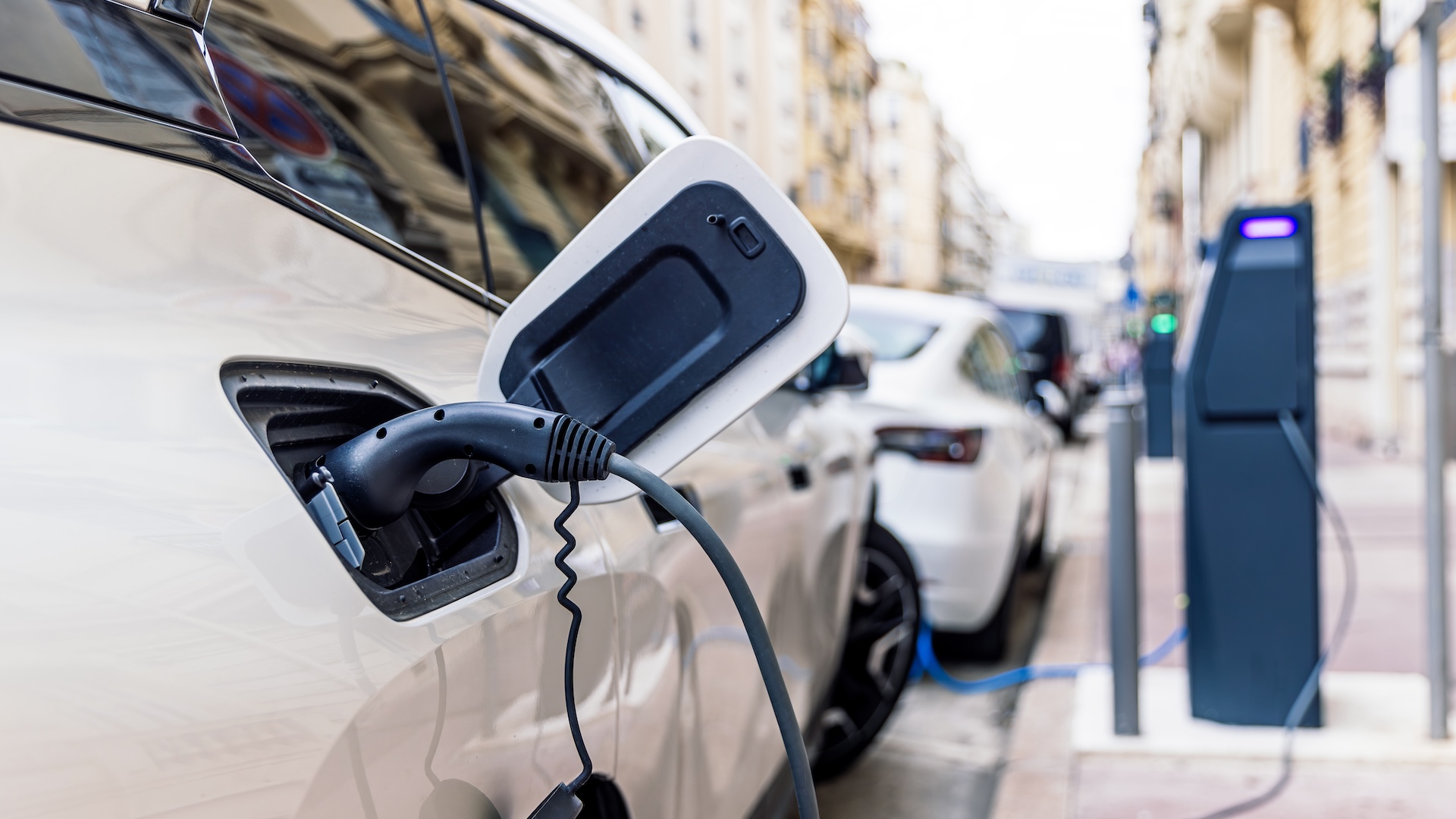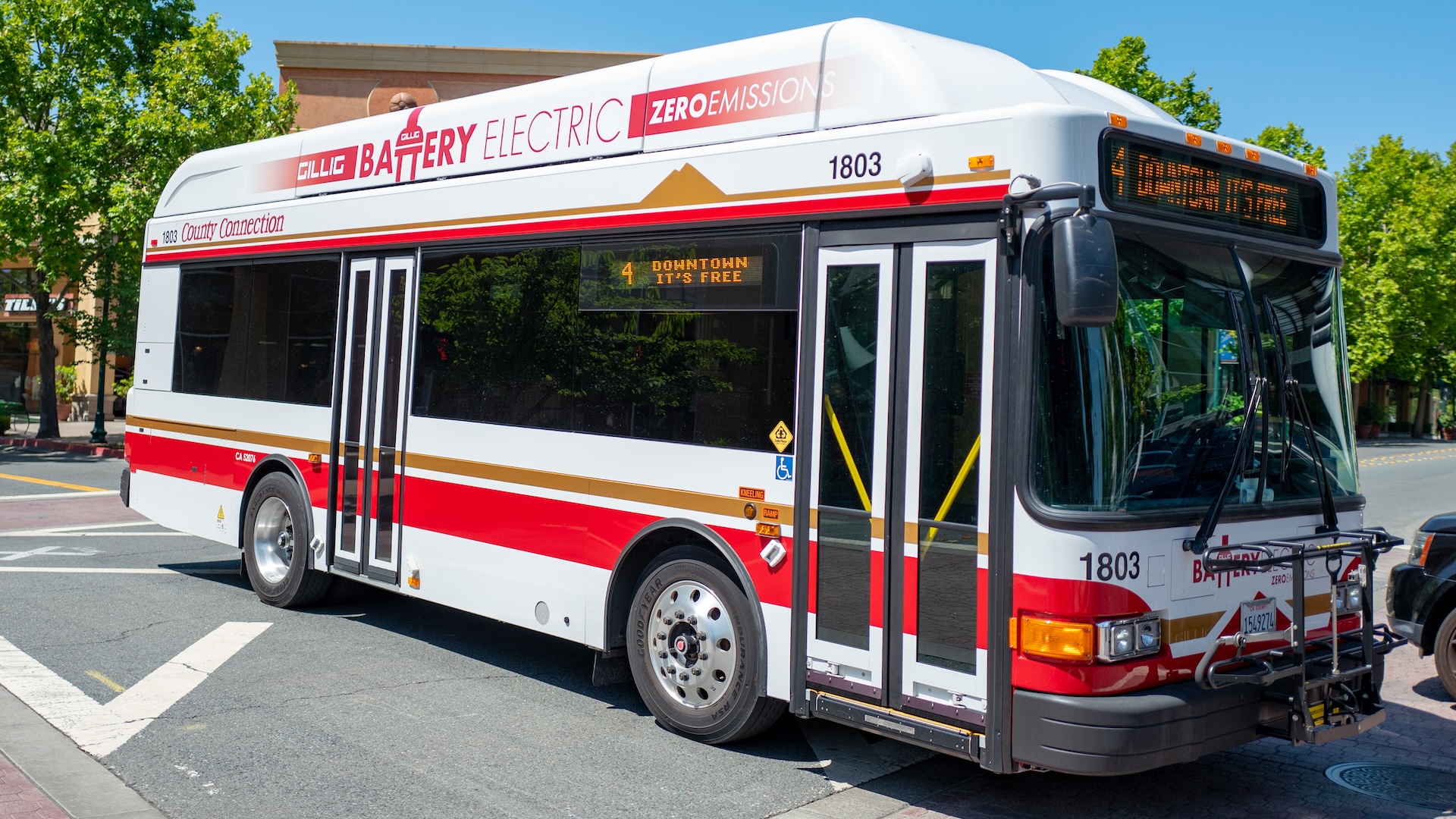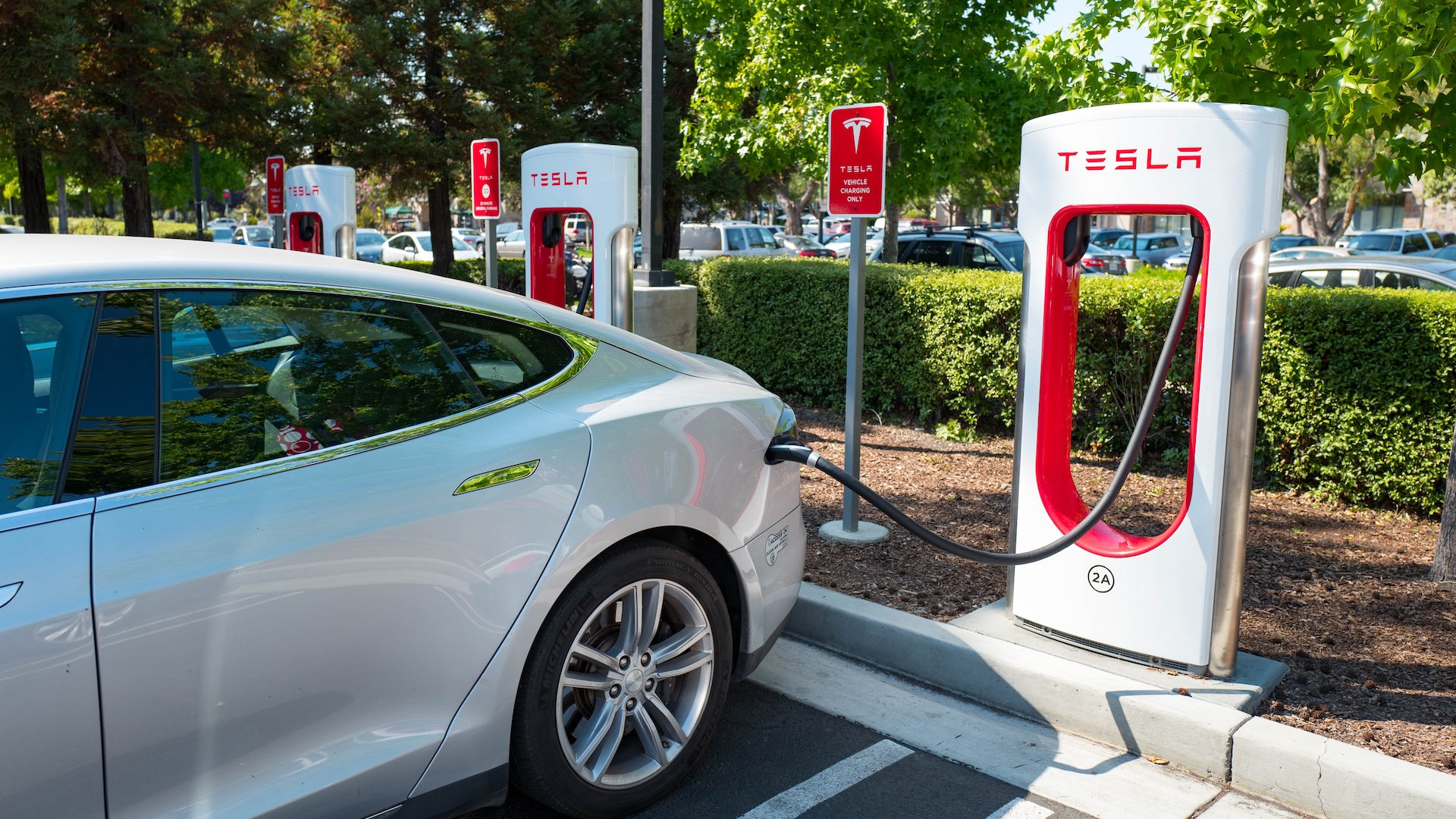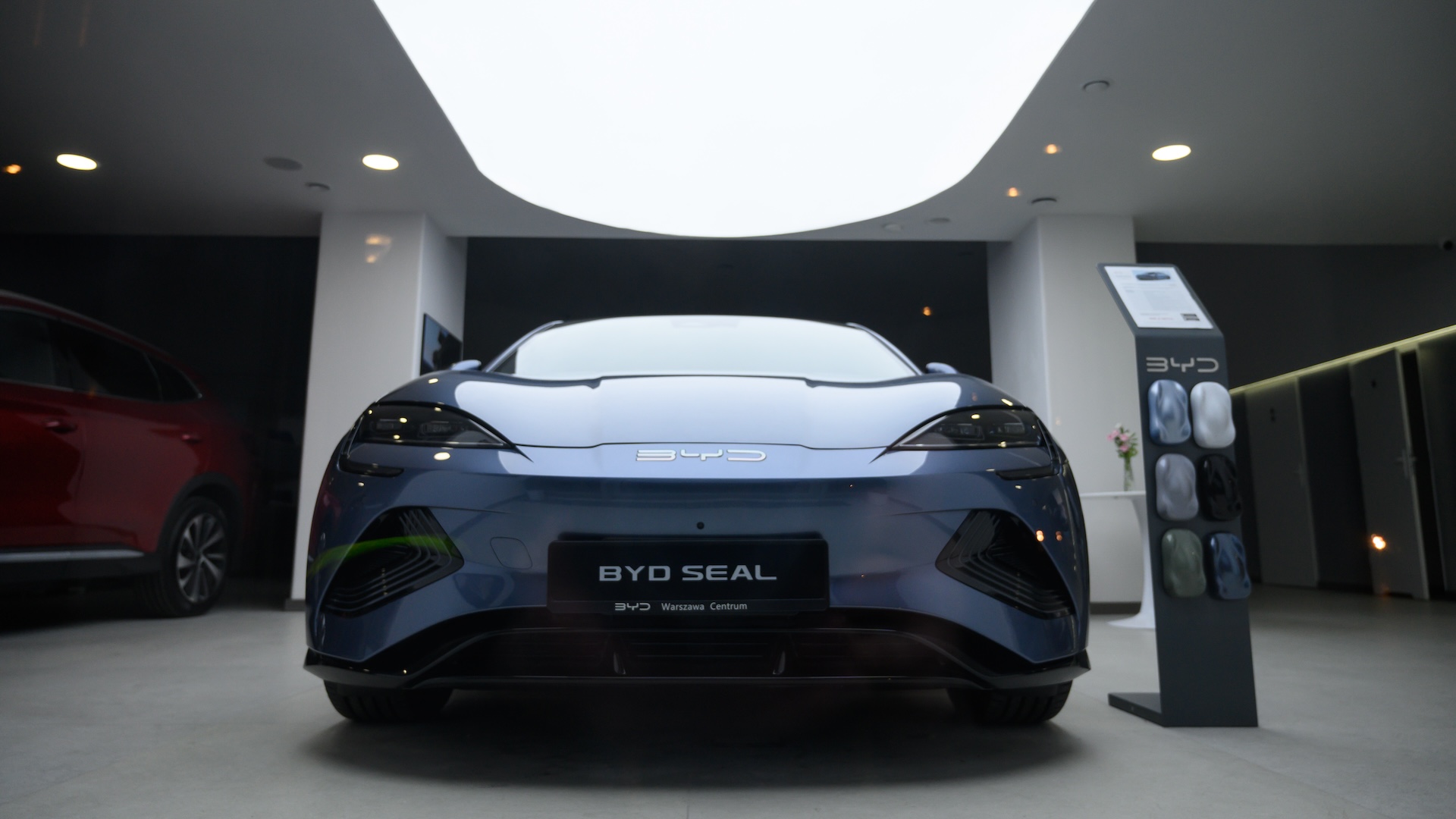Electric cars: Facts about the vehicles that are reshaping road transport
Discover interesting facts about how electric vehicles (EVs) work, how far they can go on a single charge, and when we can expect them to outnumber gas-powered cars.

Electric vehicles (EVs) are cars with engines powered by electricity rather than the combustion engines found in gasoline-powered cars.
Across the world, traditional manufacturers are adding EVs to their product lineups, as well as improving battery technology and vehicle range. In many markets, EVs are now cheaper to operate than traditional gasoline-powered vehicles, though upfront costs are higher. And EVs are only expected to get cheaper. But how do these vehicles work, are they really better for the environment than traditional cars, and how practical are they?
5 fast facts about EVs
—The first EV: The first electric vehicle was devised by Scottish inventor Robert Anderson between 1832 and 1839 — although this electric carriage was not rechargeable.
—No-engine vehicles: EVs don't have internal combustion engines. Instead, power generated by the battery is transmitted directly to the wheels.
—Shortest range: Early EVs had a very limited range, with an electric locomotive built by Robert Davidson in 1842 limited to 1.5 miles (2.4 kilometers) on a single charge.
—Largest range: The Lucid Air Grand Touring can go 512 miles (823 km) — around the distance from San Francisco to San Diego — on a single charge.
–Artificial noise: Electric cars are so silent that many countries require manufacturers to install noisemaking devices within them. These activate when the cars are traveling at speeds below 12 to 18 mph (20 to 30 km/h) to alert pedestrians of their presence.
Get the world’s most fascinating discoveries delivered straight to your inbox.
Everything you need to know about EVs
How do EVs work?
In an electric car, a battery powers a motor, which sits at the axle for the wheels that drive the car forward. In contrast, in an internal combustion engine, explosions within the engine power the vertical movement of pistons, which connect to crankshafts that translate that up-and-down motion into rotation. Matching the piston speed with the wheel's desired rotation rate requires a complicated series of gears — which is why gas-powered cars have transmissions.
Because electric cars convert energy from the battery directly into power at the wheels, they don't use a transmission or traditional gears. They can generate more direct power and torque than gasoline alternatives can, which often translates to much faster acceleration.
Electric cars also use a process called regenerative braking. When a driver takes their foot off the accelerator pedal, the car uses the momentum of the moving vehicle to spin a generator. This harvests some of the energy that is usually lost as heat in traditional braking systems, to help the electric car go farther on one charge.
What are the benefits of EVs?
EVs come with some benefits over internal combustion engine vehicles (ICEVs). In 2023, the nonpartisan research firm Energy Innovation found that it's cheaper to recharge an EV than to refill a gas tank in every U.S. state, provided that 80% or more of the charging is done at home, where electricity prices are cheaper than at public chargers.
EVs have fewer moving parts that can break, and because there's no engine, EVs don't need oil changes. Regenerative braking also greatly reduces the wear on EV brake pads.
Electric cars are also a cleaner alternative to ICEVs. Because they don't burn fossil fuels when operating, they have low carbon footprints over their lifetimes and contribute much less air pollution than ICE vehicles do.

Are EVs really better for the environment?
In short, yes. A common myth about EVs is that harvesting the elements needed to produce their batteries is more harmful for the environment than building an ICEV is. Despite the higher greenhouse gas emissions associated with building EVs, their total emissions over the life of the car can be 40% to 60% lower than the emissions of ICEVs, because EVs do not emit any carbon dioxide when driven.
Although the harvesting of rare Earth minerals and other elements needed for EV batteries is environmentally harmful, EV batteries can be recycled at the end of their lifetime.
For instance, battery recycling company Umicore says it can recover 95% of the nickel, copper and cobalt in EV batteries for reuse.
Because EVs tend to be heavier than ICEVs and produce higher torque, some have argued that EVs wear through tires more quickly and produce more particulate matter than gas-powered cars do. A study by researchers at the University of Portsmouth in the U.K. found that tire breakdown accounted for 28% of the world's microplastics.
But tire friction in both ICEVs and EVs produce particulate pollution, and driving style and road quality have bigger impacts on how much pollution is produced, German tire manufacturer Continental told The Guardian.
Finally, if power plants and car manufacturing plants increasingly use renewable sources of energy, the initial emissions associated with making EVs will approach zero. ICEVs, in comparison, will always spew CO2.
Are there downsides to EVs?
To date, EVs have higher upfront costs than most gas-powered vehicles. Their range, the time it takes to charge them, and the scarcity of high-speed chargers also may be downsides.
Some gas-powered cars can go 300 to 400 miles (approximately 480 to 640 km) on a full tank of fuel. When the car runs low on gas, it takes just five minutes to fill up at a gas station. In contrast, EVs can often go 100 to 310 miles (160 to 500 km) on a full charge and may take between 30 and 90 minutes to sufficiently recharge at a charging station.
Chinese automaker BYD has unveiled a new charging technology that the company claims can recharge its EVs in just six minutes, which would make recharging as quick as refilling a fuel tank. However, such technologies are still emerging and not widespread. That said, electric cars that can run for more than 300 miles on a single charge are widely available. In addition, charging stations are becoming more widespread, with more than 192,000 publicly available EV charging stations now operational in the U.S. However, charging stations may be scarce in some states, and they may be more difficult to access than gas stations.

Can heavy vehicles be electrified?
Electric heavy vehicles, such as trucks and buses, are already on the road.
Electric buses are commonplace in China, where around 70% of all buses and trolleybuses are electric. In the U.S., there are now more than 5,000 electric school buses, while 11% of all bus registrations across the U.S. were zero-emission.
In 2024, Volvo announced that it would launch an all-electric semitrailer with a 370-mile (600 km) range, and it is scheduled to be released toward the end of 2025. Tesla announced its electric semitrailer truck, with a 500-mile (800 km) range, in 2017 and is aiming to achieve scale production of the vehicle in 2026.
How far can electric vehicles drive?
The longest-range electric vehicles currently on the market include the Lucid Air Grand Touring, which has a range of 512 miles (824 km) per charge, and the Mercedes-Benz EQS 450+, which has a range of 510 miles (822 km) on a single charge, per the manufacturers.
The most affordable EV available in the U.S. right now — the Nissan Leaf — goes 149 to 212 miles (approximately 240 to 340 km) on a charge. As battery technology evolves and solid-state EV batteries, which do not use a liquid electrolyte solution, become commonplace, these ranges may increase.
Glossary of terms
- Regenerative braking: In electric cars, kinetic energy taken from the process of slowing the vehicle with its brake pedal is converted into electricity that recharges the battery.
- Internal combustion engine: Internal combustion engines burn fuel to produce controlled explosions. These bursts push pistons up and down hundreds of times per minute to drive a crankshaft and turn the wheels of a vehicle.
- Vehicle emissions: Vehicle emissions are substances released during a vehicle's operation. As gas-powered cars burn fuel, they produce pollutants such as carbon dioxide (CO2) and carbon monoxide, which are emitted from the tailpipe. EVs do not have an internal combustion engine, so they produce zero tailpipe emissions.
- Torque: Torque is the rotational force produced by a vehicle's engine and what enables a car to get up hills and accelerate quickly. EVs typically have higher torque than gas-powered cars do.
EV pictures

EV history
The 1900 Woods Electric Buggy. The first EVs date back as far as the 1800s.

Charging
A Tesla supercharger station. Charging infrastructure is a major barrier to electric vehicle adoption.

New technology
China's BYD SEAL. The company claims to have developed a new technology that recharges cars in just six minutes.
Discover more about EVs
—Near-unlimited EV range now a possibility thanks to surprising new technology — solar paint
Rory Bathgate is a freelance writer for Live Science and Features and Multimedia Editor at ITPro, overseeing all in-depth content and case studies. Outside of his work for ITPro, Rory is keenly interested in how the tech world intersects with our fight against climate change. This encompasses a focus on the energy transition, particularly renewable energy generation and grid storage as well as advances in electric vehicles and the rapid growth of the electrification market. In his free time, Rory enjoys photography, video editing and science fiction. He joined ITPro in 2022 as a graduate, after completing an MA (Hons) in Eighteenth-Century Studies at King’s College London. You can contact Rory at rory.bathgate@futurenet.com.
You must confirm your public display name before commenting
Please logout and then login again, you will then be prompted to enter your display name.



